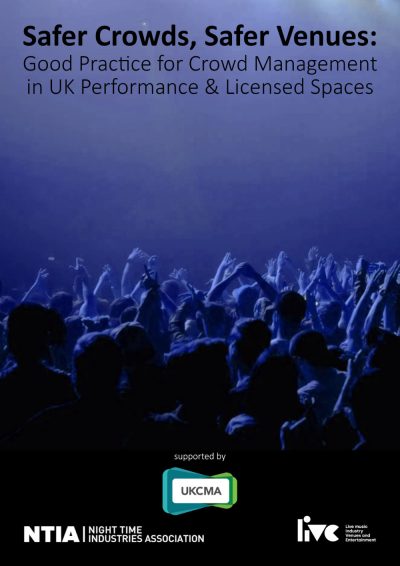In response to several high-profile incidents resulting in loss of life or serious injury, a collaborative effort has been undertaken by the UK Crowd Management Association, Night Time Industries Association, LIVE, and UK Door Security Association. Alongside experts and key stakeholders from the industry, they have unveiled a comprehensive best practice guide to enhance crowd management practices in performance spaces and licensed venues across the United Kingdom.
This initiative aims to provide venue operators, organisers, and their stakeholders with a general outline of accepted good practice in crowd management, filling a crucial gap in safety protocols, particularly for indoor spaces smaller than arenas. The guide, a culmination of insights from experienced individuals within the industry, offers valuable perspectives tailored to ensure the safety, security, and optimal experience of attendees.
“The tragic incidents in recent years underscore the critical need for standardised and effective crowd management practices,” said Anne Marie Chebib, Chair of the UK Crowd Management Association. “This guide represents a milestone in our collective efforts to prioritise safety and well-being in performance and licensed spaces.”
The guide addresses various aspects of crowd management, including risk assessment, planning processes, stakeholder engagement, and considerations for different types of venues and events. It emphasises the importance of proactive measures and diligent planning to mitigate potential risks, recognising that strategies may vary depending on the nature of the event and venue.
“While this document serves as a valuable resource, it is important to recognise that it does not replace regulatory tools or official guidance,” noted Michael Kill, representative of the Night Time Industries Association. “Instead, it complements existing frameworks by offering practical insights and recommendations based on industry expertise.”
The guide encompasses a wide range of indoor venues, including concert halls, theatres, nightclubs, bars, pubs, restaurants, and comedy clubs hosting cultural and entertainment events. However, it excludes arenas over 5,000 seated capacity, outdoor events, and sports grounds, which are covered by separate guidelines.
“Effective crowd management is fundamental to the success and sustainability of any venue or event,” said Eric Stuart, Former Chair of the UK Crowd Management Association. “By adhering to the principles outlined in this guide, operators can ensure the safety of patrons and staff while fostering a vibrant and inclusive atmosphere.”
The release of this guide marks a significant step forward in enhancing safety standards across the UK’s entertainment and hospitality sectors. While it provides valuable insights, users are encouraged to seek legal advice and consider statutory duties in conjunction with the guidance provided.
Jon Collins CEO LIVE commented: “At the heart of every venue is the promise of unforgettable experiences, a commitment to the joy and safety of every individual who walks through its doors. The launch of Safer Crowds, Safer Venues offers timely support in the vitally important area of crowd management to those small and medium size venues previously underserved in this area. Its content, prepared by a team of dedicated and expert volunteers, will underpin the delivery of safer events across the UK. LIVE commends this work and the contributions made by UKCMA and NTIA”.
To access the guide, click here.






